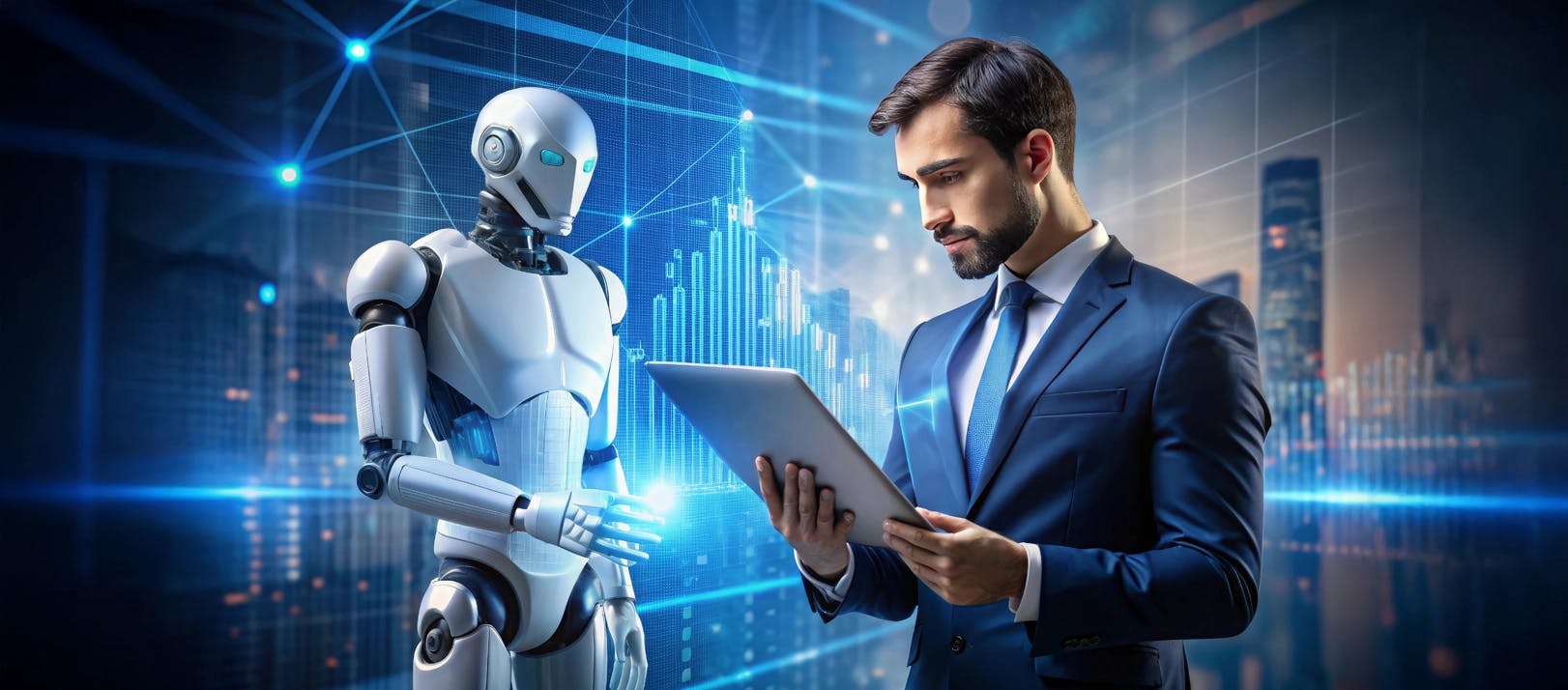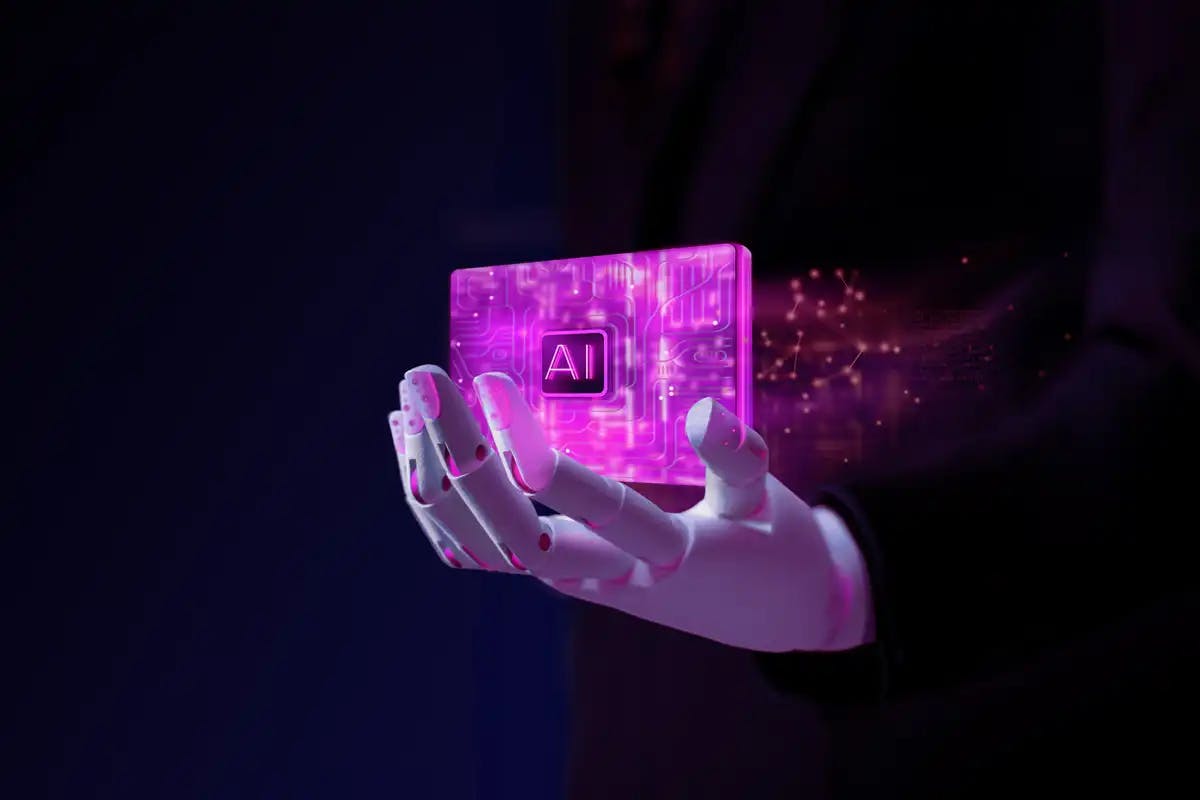


We're in Twenty-first century, where we are progressing 10 times faster in every field, and education is one of them. Education is the right of every child, but language barriers like students not being able to speak the main languages used in schools make it hard for both teachers and students. But now that I have mentioned everything is progressing so fast, technology is also one of them, and when tech meets education, a no-wonder miracle happens as AI in education is helping to solve this problem, creating more inclusive learning environments.
A few years ago, it seemed impossible to get through language barriers, but now technology is making it possible with tools like real-time translation and personalized learning powered by AI in Edtech. Think about German students who don't speak German as their first language. They often have trouble understanding what is being taught. In the same way, students in rural India have trouble with English-based lessons, which makes it hard for them to understand and learn. 40% of people around the world can't go to school in a language they know.
Studies show that students can do better in academics and remember things for a long time when they learn in the main language of instruction and their first language. Governments around the globe understand that it’s very important to provide education in different languages.
The Biden-Harris administration in the U.S has launched a campaign with the slogan “Being bilingual is a super-power” for students to encourage them for better performance by learning in more than one language. A survey established that a student’s language proficiency improves by 30% with the assistance of an AI translation tool as compared to the previous year.
By using AI, we can make learning more effective and open to everyone. No matter what language students speak as their native tongue, they have the opportunity to excel in every field.
In this blog post, you’ll go through more about how AI is making education better, removing language barriers, and helping students across the world learn and grow.
AI is becoming more and more awesome in every aspect of our lives, and it has not left out learning and teaching. AI in Education is leading towards changes in delivering educational system as well as changing the techniques of providing knowledge to the people around the world.
An example of this is the development of artificial intelligence that can change content and difficulty based on the learner’s native language to guarantee that a student is not just interacting with material, but mastering it. Students who previously had difficulties in learning because of language differences now have a chance to learn as effectively as other students when AI is involved in the learning process.
Language barriers in education have always been an issue, especially in multilingual classes where pupils speak various languages. These impediments may have an impact on student knowledge, engagement, and confidence, frequently leading to learning gaps.
AI language translation has emerged as a transformational technique for solving these challenges. With the introduction of AI language translation technologies, instructors may now efficiently connect with pupils who do not speak the same language. These systems are intended to provide real-time translation, allowing for more seamless interactions in the classroom.
AI technology allows for:
The implementation of AI for multilingual classrooms has changed how teachers interact with students who speak different languages. These classrooms use AI language support in EdTech to provide real-time translation, helping students comprehend lessons more effectively and ensuring that they don’t miss out on key information.
Teachers may employ AI-powered technologies to provide simultaneous translations, enabling students to comprehend lectures in their home language without slowing down the speed of the classroom.
Let's consider the case of a high school in Gujarat, India. The teachers have incorporated Google Translate to facilitate the teaching and learning process for students with different languages. While having a lecture, the use of Google Translate ensures that real-time translation initiation of the spoken words by the lecturer occurs, and the translated word is immediately portrayed on the students’ devices using native languages.
The tool has been extremely useful in enhancing student learning and engagement especially such students who find it difficult to grasp issues Because of language barrier. The students have also claimed that they have noted an improvement in their participation and performance, since they are no longer confused with the instructions given in class, or need further clarification, slowing down the process for the rest of the class.
Practical applications include:
One of the most practical applications of AI in overcoming language barriers is through AI-driven transcription tools. These tools automatically convert spoken language into text, offering students transcripts of lectures in their native languages.
AI transcription in education offers the following benefits:
Otter is being used by teachers at one of the universities located in California. AI to enable real-time lecture transcription. This tool transcribes voice into text that could be translated into other languages to help speech-impaired individuals. The students’ cell phones specifically can translate sentences into the student’s native language in real-time. This has been quite advantageous to students, especially in terms of appreciating and responding well to teacher’s directions, especially those students who have language barriers.
Break language barriers in education with Codiste's AI-powered custom eLearning Solution
NLP is a branch of AI that focuses on how computers process and communicate through written or spoken language. It serves as the foundation, for these advancements in technology integration, into education systems. By incorporating NLP(natural language processing) into technology (EdTech) we can create tools that offer real-time translation and understanding capabilities to support students facing language challenges in enhancing their learning experiences efficiently.
Key NLP applications in education include:
The upcoming changes, in education, focus on customization with AI-based tailored learning playing a role in this shift towards learning experiences for students by adapting information to individual learning styles as well, as linguistic needs.
Through the utilization of educational technology tools and strategies, artificial intelligence (AI) offers customized learning paths that cater to challenges and cultural differences. This proves to be particularly vital, for students, in environments where the primary language is not their one as traditional methods may not yield as much success. Ways in which AI addresses this challenge include:
In schools, across Europe, teachers make use of Chatbot GPT to customize their student's learning experiences. This AI tool adjusts to students’ learning styles and language needs. For instance, in one school Chatbot GPT offers translations and personalized materials to help students who speak different languages understand their lessons better. Teachers report that this technology has greatly improved student participation and understanding for those who faced difficulties, with language barriers before.
AI chatbots in education technology are another new method for bridging language difficulties. These chatbots serve as virtual assistants, answering students' inquiries in real time, regardless of the language they speak.
Educational AI chatbots can:
Students no longer need to feel alone owing to language issues since chatbots provide them with an accessible instructor available 24 hours a day, seven days a week.
Duolingo is a famous language learning platform using artificial intelligence chatbots to assist users in practicing new languages. These AI chatbots provide real time conversation practice, allowing users to ask questions and get immediate answers in their target language. Duolingo’s chatbot is used by teachers in a school of Spain in language classes. Chatbots help Students practice speaking and writing in English and get immediate corrections and tips if they get stuck anywhere. This has greatly improved their language skills and confidence making learning more fun and engaging.
AI helps to overcome the issue of communication in the language and changes education for students with disabilities in a positive way, since it can offer features like voice-to-text dictation and text-to-speech conversion, which ensures more effective participation by students with impaired hearing or vision during classes.
Thus, making bilingual students interested in the subject by using AI is therefore important to ensure they connect it with them in the best way that works for them.
From a business perspective, it is evident that, for the technology companies, new start-ups and educational institutions it is mandatory to integrate AI as the solution to the language issue in education. Here are some practical methods of getting started.
AI is revolutionizing education by breaking language barriers and making it possible for anyone to learn. Due to services such as instant translation, adaptive learning, and natural language processing (NLP), AI ensures that learners who have different languages are not left behind in their classes. These technologies do not set barriers of language and turn classrooms into a global class where students from different countries have equal chances and can do well.
Are you interested in integrating advanced technologies into your platform? Codiste, a leading AI development company in the USA, offers bespoke AI services that can help your institution overcome the challenges of implementing multilingual education. Contact us today to provide your learners with an international experience.




Every great partnership begins with a conversation. Whether you’re exploring possibilities or ready to scale, our team of specialists will help you navigate the journey.